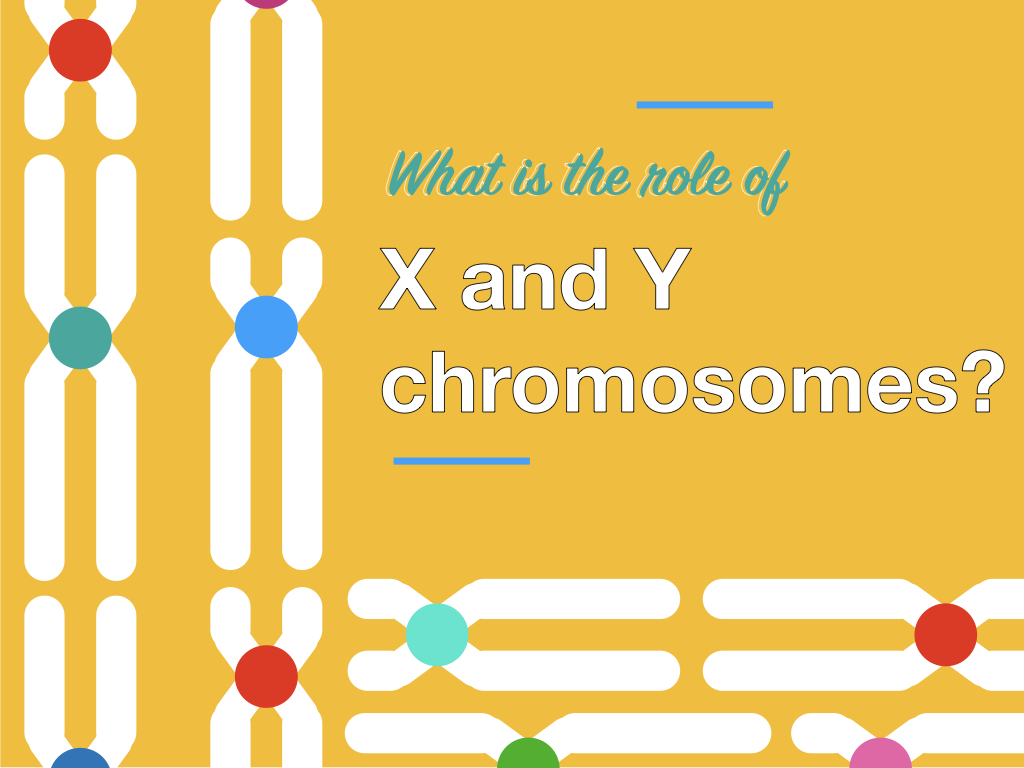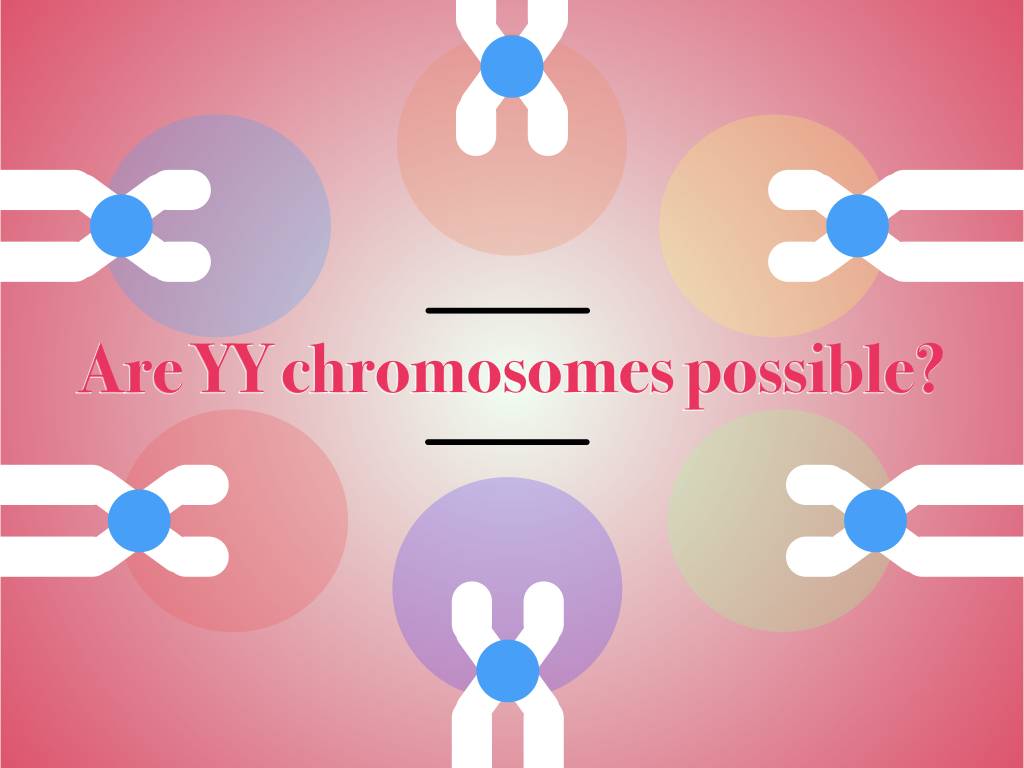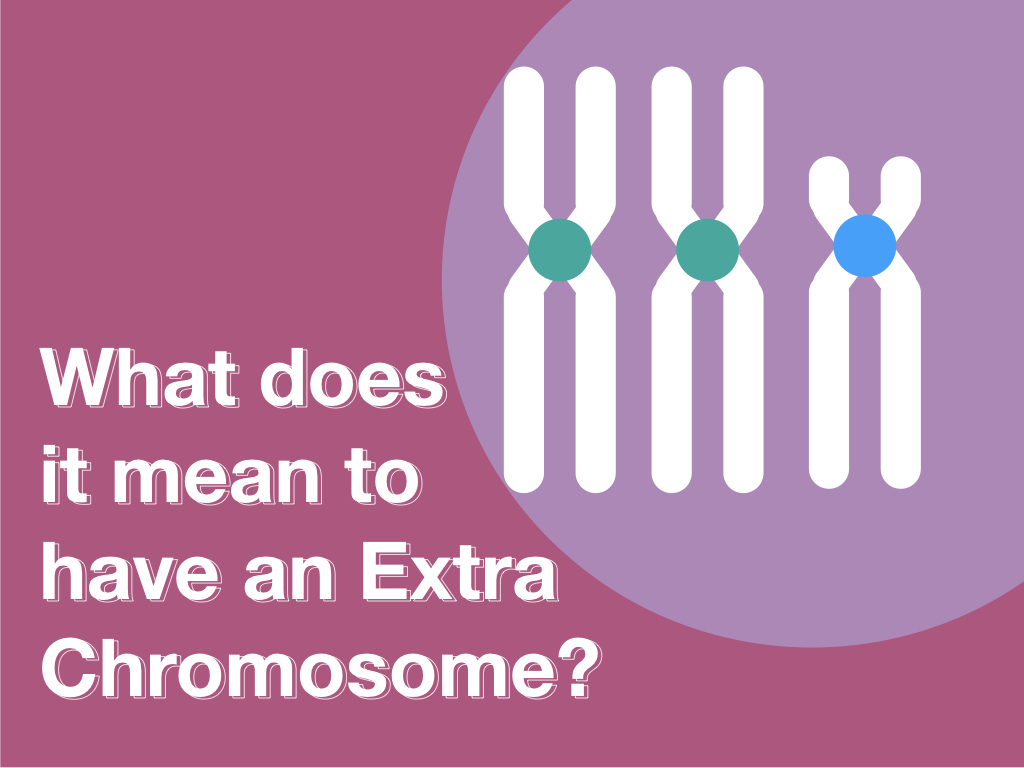The X and Y chromosomes are considered as “sex- chromosomes” or “allosomes” that help in deciding the sex of the fetus.
X and Y chromosomes though are popular as sex chromosomes, do a lot more than that for us. In the present article, I will explain to you the structure of the X and Y chromosomes and their role for us.
I will also try to explain to you the karyotype and various detection technique of X and Y chromosome.
Related article: Interpreting human karyotype report.
What are X and Y chromosomes?
The X and Y chromosomes are a pair of sex chromosomes present in human and decide the sex of a fetus. The X and Y chromosome or the XY system of sex determination is first explained by Nettie Stevens and Bryn Mawr in 1905.
Karyotyping is a common genetic technique employed to study chromosomes. The important information associated with the chromosomes is revealed and studied by the present technique. It gives information on the structure, function and numbers of chromosomes.
Chromosomes are the place to DNA, complex interaction of protein and DNA that set all genomic in the nucleus. From organisms to organisms the number of chromosomes varies.
When we are talking about humans, 23 pairs of chromosomes; a total of 46 are present in every somatic cell. Note that the germs cells are haploid in nature.
From the 23 pairs, 22 pairs are autosomal chromosomes autosomes and a single pair of sex chromosomes.
X and Y are two types of sex chromosomes present; male individuals have X and Y chromosomes while female individuals have two XX chromosomes present as sex chromosomes.
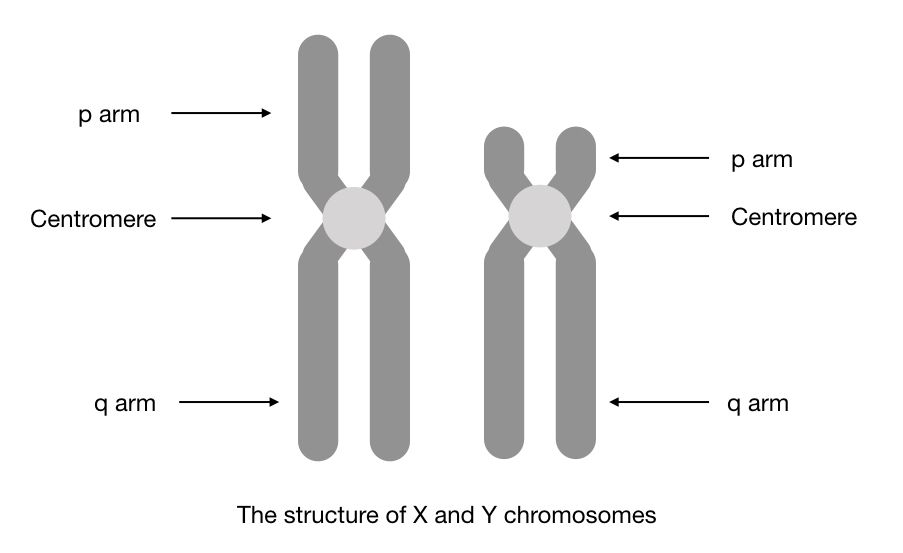
Read more: What does a human karyotype reveal?
What is X chromosome?
Documents on the internet suggest that the X chromosome or more precisely the X-body was discovered in 1890 by Hermann Henking. As it looks like X shaped cytologically, under the microscope, it was denoted as X chromosome.
Karyotyping analysis suggests that the X chromosome is present in both male and female individuals; XX in female and XY in male. Besides, it’s a submetacentric or medial submetacentric chromosome, also indicated through karyotyping.
- Type- submetacentric
- Number of genes- ~800
- Length- 156,040,895bp (156 MB)
- Type of chromosome- Allosome or sex chromosome
- Present in- male and female
Inheritance pattern:
Both male and females have different inheritance patterns for X chromosomes. For example, in males the single X chromosome is inherited from his mother while in females one X chromosome is inherited from mother and another from father.
Henceforth, the genes located on the X chromosome as well as associated disorders also have a distinct inheritance pattern. Some follow X linked dominant while some follow X linked recessive inheritance patterns.
In X-linked dominant inheritance, a single X chromosome is enough to cause disease in both male and female whilst in X-linked recessive, two recessive X chromosome in female and a single X chromosome in male is responsible for inheritance of trait or disease.
Note that in either case of X linked dominant or recessive, the male individuals have the same inheritance pattern for the disease.
Function of X chromosome:
We known the main role of the X chromosome is to participate in sex determinaiton. Besides, genetic mapping studies also show that more important genes associated with femaleness, cognitive skills, mental growth and growth and development are located on the X chromosomes.
Studies suggest that mutations in various genes located on the X chromosome cause a range of mental and cognitive disorders, with these growth retardations are also reported.
Henceforth, the X chromosome plays role in sex determiantion and differentiation, development of conginitive skills, development of mental growth, overall growth.
Klinefelter syndrome, Triple X syndrome, Turner syndrome, Fragile X chromosome and XX male syndrome are some common X linked disorders.
Read more: XXXXY Karyotype- The Rarest Case of Aneuploidy.
What is the Y chromosome?
The Y chromosome is shortest human sex chromosome present only in male individuals. G-bands coupled karyotyping studies suggest that the Y chromosome is a small acrocentric chromosome having a very small p arm and not present in females.
The Y chromosome consists of important maleness genes that helps in correct development of many male sexual and secondary sexual phenotypes. Studies suggest that the Y chromosome didn’t occur naturally unlike the X one! It evolved from autosomes 300,000 years ago.
The Y chromosome have around 63 functional genes, involved in sex determination and differentiation, majorly.
- Type– short acrocentric
- Number of genes- 63 to 80
- Length– 57,227,425bp
- Type of chromosome– allosome or sex chromosome
- Present in– males only
Inheritance pattern:
The Y chromosome has a unique inheritance pattern known as Y linked inheritance. The Y chromosome inherited from father to their child but not inherited in females.
Mutations in genes location on the Y chromosome affects males only.
Function of Y chromosome:
As we said, the Y chromosome favors maleness and genes associated with the maleness are there only on the Y chromosomes. SRY and TDF viz sex determining region on Y and testing determining factor are present on it, respectively.
Primary and secondary male sexual phenotypes like sex determination, development of male gonads, testes, male hormones, body hair and hirsutsm are there on Y.
Nonetheless, mutations in the AZF region known as azoospermic region cause male infertility. A small portion of PAR- psuedoautosomal region on Y behavesl like autosome, involves in recombination with X chromosomes, sometimes and induce sex reversal like conditions.
No major cytological conditions are associated with the Y chromosome besides microdeletion of Y.
Read more: What does an Abnormal Karyotype Show?
Role of X and Y chromosomes
So far, it is clear that X and Y chromosomes decides sex in humans, but the question is how? What is the mechanism actually?
The process of sex determination and sex differentiation are different, one ddecides the gender, other decides related phenotypes. X and Y chromosomes govern sex determination and sex differentiation process.
The process of gender determination for a fetus is less complicated and strigthforward, comparatively to sex differentiation.
The process starts when germs cells are fertilized. Egg and sperm in females and male, respectively, are germ cells and have only haploid sets of chromosomes viz only 23!
Egg possesses either of the X chromosome while the sperm cell possesses either X or Y chromosome. When fertilization occurs between the egg and sperm cell having X chromosomes, it forms a female.
When fertilization occurs between the egg and sperm cell having one X and Y chromosome, it forms male.
Once either of the sex formed, the process of sex differentiation initiated. Primary and secondary sex phenotypes begins to form. Here various sesx chromosomal genes as well as autosomes came in picture to produce various phenotypes.
Genes like SRY, SOX9, WT1, WNT4, SOX4, RSPO1, FGF9 are some of genes that directly involved in the pathway of sex determination. Abnormal expression or mutations in any of the genes involved in the pathway cause abrupt, abnormal genitalia or genital dysgenesis.
Infertility, intersex, mixed gonads are common problmes caused through the gene mutations.
“Sex determination is a process in which from the bipotential gonad either testis ovary forms.”
The process known as X chromosome inactivation regulates gene expression of X chromosomes in somatic cells. As females have two X chromosomes, the expression of genes present on it duplicates, therefore one entire chromosome becomes transcriptionally active in somatic cells to regulate gene expression of X chromosome.
Related article: What is Chromosomal Translocation?- Definition, Mechanism and Types.
Difference between X and Y chromosomes:
| X chromosome | Y chromosome |
| Small sub metacentric | Acrocentric |
| 900 to 1400 genes | 50 to 60 functional genes |
| 155 million base pairs | 57 million base pairs |
| Distinct p and q arm | Distinct q arm and very shorter p arm. |
| Present in females and males | Present in males only |
Fact sheet- X and Y chromosome
- The X and Y chromosomes are a set of sex chromosomes in us.
- The X and Y chromosomes possess around 800 to 63 functional genes, respectively.
- Cytologically the X and Y chromosomes are small submetacentric and acrocentric, respectively.
- The X chromosome is made up of 155Mb while the Y chromosome is made up of 57Mb in length.
- The X chromosome has two distinct p and q arms while the Y chromosome has one long q arm and a shortened p arm.
- Both males and females have X chromosomes, single in males and two in females while only males have the Y chromosomes.
Detection of X and Y chromosome:
Karyotyping study of X and Y chromosomes reveal interesting information related to the patient. A minute change in either chromosome causes very serious and harmful side effects.
Conventional karyotyping followed by G bands are enough to interpret X and Y chromosomes, though other banding techniques, FISH and microarray can also be used to study minor alterations.
The X and Y chromosomes study is conducted for sex determination, find strcutrual alterations in either chromosomes and numerical alterations in the same.
Sample type may vary based on the study conducted, samples are collected and cultured using the RPMI-1640 and incubated for at least 72 hours, under strict aseptic conditions.
Cells are then harvested using the fixative until clear pellets appear and cells are stored. After that, G banding is performed using Giemsa and trypsin. After banding, the slide is observed under the microscope.
Different banding patterns help to interpret structural and numerical chromosomal mutations.
Change in the number of X and Y chromosomes, larger translocations, larger deletions are encountered by karyotyping. Note that the X chromosome is a small metacentric and Y is a small acrocentric chromosome.
Karyotyping study of X and Y chromosomes provides important information related to one’s gender and gonadal development.
Karyotype of X and Y chromosome:
The karyotype of X and Y chromosomes reveal some of the interesting information, the X chromosome is smaller metacentric chromosomes while the Y chromosome is acrocentric.
Females have two similar X chromosomes and don’t have Y chromosome whilst the males have one X and one Y chromosome, in normal karyotype.
There are a total of 40 different G bands that appear on X chromosome while 11 G bands are present on Y chromosome.
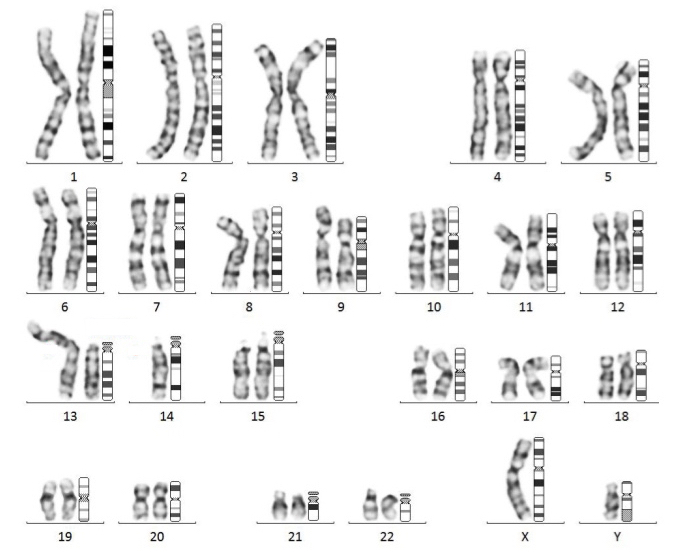
Bands on the X chromosome are distributed almost equally on the X chromosome while the majority of bands are present on the arm of the Y chromosome.
Read further: Preparing a Karyotype (Karyogram) in 5 Steps.
Disease-associated with X and Y chromosomes:
Disorders associated with X chromosome
- Klinefelter syndrome
- Turner syndrome
- Triple X syndrome
- Hemophilia B
- TARP syndrome
- Jense syndrome
- Lujan-Fryns syndrome
- FG syndrome 5
- Fragile X syndrome
- Hemophilia A
- Duchenne muscular dystrophy
- Becker’s muscular dystrophy
- G6PD
- X-linked ichthyosis
- Red-green color blindness
- Barth syndrome
- Fabry disease
- Kabuki syndrome
- Spinal and muscular atrophy
- Lesch-Nyhan syndrome
- Low syndrome
- Ocular albinism
- Spinal muscular dystrophy
- X-linked sideroblastic anemia
- Wiskott-Aldrich syndrome
- Occipital horn syndrome
- Rett syndrome
- Aicardi syndrome
- Incontinentia pigmenti
- Vitamin D resistant ricket- X-linked hypophosphatemia
- Goltz syndrome
- Fragile X syndrome
Disorders associated with Y chromosome
- Y chromosome microdeletion
- XXY syndrome
- XYY syndrome
- XX male syndrome
Conclusion:
X and Y chromosomes are important for humans as they play a very essential role. But besides their role in deciding gender, genes located on them, especially on the X chromosome are also involved in Mental, cognitive and physical development.
Technically, identification of X and Y chromosomes using karyotyping is an easy task but knowing alterations on is quite tedious. Only experts can find out various associated with it.
